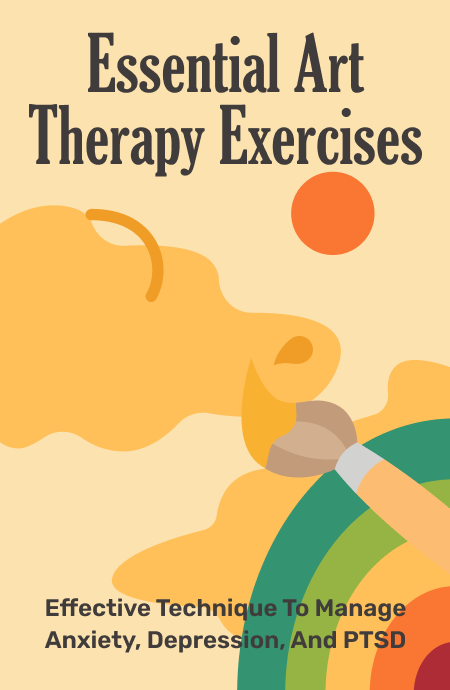Lesson 1- So What is Art Therapy?
Art therapy is a psychotherapeutic approach to treating behavioural and emotional disorders that uses art and psychology to help improve lives. Through the process of creating art, participants can express their feelings and heal what is causing them anxiety, depression or PTSD. Art therapists are master's degree clinicians trained to create therapeutic relationships with participants that facilitate opportunities for increased awareness, self-awareness, and self-esteem. While enhancing social and coping skills, art therapy may also help us understand our surroundings. Adrian Hill, a British artist, author, and art therapist, created the phrase "art therapy" in 1942. Hill realised the therapeutic potential of art for the sick in 1938, while being treated for tuberculosis at a hospital. He began working with other patients at their bedsides and documented his results in a book called Art Versus Illness.
Art therapy's purpose is to employ a creative process to attain self-awareness and self-reflection to build personal knowledge insight and emotional self-control. Art is a visual representation of one's thoughts and feelings. This mental representation might offer answers to issues and thoughts about what is causing these sentiments. These reviews serve as a beginning point for accepting these sentiments and learning to produce new emotional reactions. Long-term benefits of this process include increased self-esteem, empowerment, and the development of abilities that may be utilised in the future to tackle life's obstacles.
Art therapy's advantages are supported by research in the field of Cognitive Behavioural Art Therapy (CBAT). According to Marcia Rosal's book Cognitive Behavioural Art Therapy, evidence-based research shows that CBAT is the most effective treatment for anxiety, sadness, and PTSD. CBAT's goal is to train an individual to adapt to various life situations by boosting adaptation and learning to adapt to the environment.
Art therapy may help boost one's self-esteem. Filling up a painting may provide a sense of achievement, empowerment, and happiness to a depressed individual. Discussing work improves self-perception. Even if someone is depressed or anxious, looking at artwork and discussing it leads to self-reflection, which increases self-awareness and self-control. Art therapy may assist in identifying emotional issues, emphasising them, and developing a constructive commitment to coping with them. Developing the art of recalling one's memories is a cognitive process therapy. People suffering from PTSD must engage with what caused their initial stress and work with their emotions. That individual may manage life experiences to buffer their trauma by studying these feelings and integrating them into their spirit. Art therapy also improves problem-solving abilities since various exercises are meant to help you identify alternative ways to address situations.
Lesson 2- Drawing and Painting as an Art Therapy Technique
<span
Unlock Knowledge with Wizdom App
Explore a world of insights and wisdom at your fingertips with the Wizdom app.
 1 Million+ App Download
1 Million+ App Download  4.9App Store Rating
4.9App Store Rating 5000+Summaries & Podcasts
5000+Summaries & Podcasts





